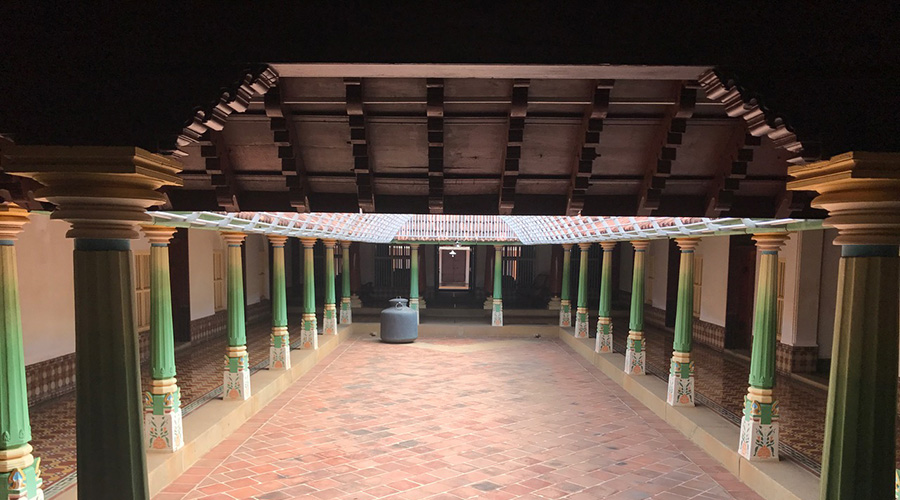
A Journey to Chettinad with Alfred Prasad
One of my favourite places to visit and experience in India is Chettinad. I am fortunate to have many Chettiar friends who have opened their homes and hearts to us and who’s hospitality I couldn’t ever possibly match.
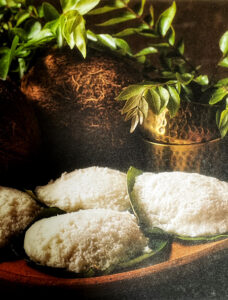 I remember my first time there and being blown away by everything I experienced. Getting to this region is not simple, from any of the neighbouring big cities. My wife and I decided to do a road trip around south India and Chettinadwas top on our list of places to experience. We drove from my parent’s home in Coimbatore to the temple city of Madurai and then on to the heartland of Tamil Nadu, crossing several villages that dot this region, to reach Palathur village. You need to be physically present in this remote part of India to understand how special it feels.
I remember my first time there and being blown away by everything I experienced. Getting to this region is not simple, from any of the neighbouring big cities. My wife and I decided to do a road trip around south India and Chettinadwas top on our list of places to experience. We drove from my parent’s home in Coimbatore to the temple city of Madurai and then on to the heartland of Tamil Nadu, crossing several villages that dot this region, to reach Palathur village. You need to be physically present in this remote part of India to understand how special it feels.
Chettinadis an area covering around 75 villages in interior Tamil Nadu in South India. Its most glorious 150 years began when the Chettiars ventured into Ceylon (Sri Lanka) in 1796 and Burma in 1824. The Chettiars left their homes to work as traders and moneylenders in Burma, Ceylon, Malaysia, Singapore, Vietnam and other South-East Asian countries. This brought about an exotic exchange of spices, techniques and ideas that became major milestones in the Chettinad culinary evolution. The prosperous Chettiar families also entertained the top brass of the British Raj extensively, which brought a bit of western influence in their repertoire. The indigenous cooks learnt to cook British classics to please their guests, which added another facet to this eclectic cuisine. Their well-appointed dining rooms have menus from those times, framed and displayed on their walls; something I was most excited to see.
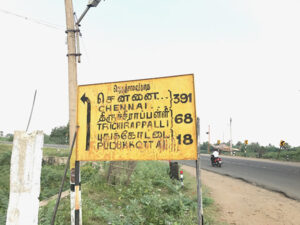 This region is packed with history and grandeur. It is home to an extraordinary heritage of temples, mansions, customs, rituals, arts, crafts, hospitality and cuisine. A lot of the prosperous families have moved out of Chettinad to nearby cities such as Chennai and Bangalore or overseas, returning to Chettinad for life-events and ensuring their connection remains as strong as possible to their ancestral land.
This region is packed with history and grandeur. It is home to an extraordinary heritage of temples, mansions, customs, rituals, arts, crafts, hospitality and cuisine. A lot of the prosperous families have moved out of Chettinad to nearby cities such as Chennai and Bangalore or overseas, returning to Chettinad for life-events and ensuring their connection remains as strong as possible to their ancestral land.
The region is very creative thanks also to their exposure to other countries and cultures. Their athanguditiles are beautiful as well as ingeniously designed to suit their climate; the kottans (baskets) though utilitarian add beautiful colour to households, vibrant checkered patterns on the Chettinad cotton saris, incredible architecture and wood work (using techniques and even material such as Burma teak), the incredible wall plaster that shines like polished marble; all add to make Chettinad such a powerhouse of culture and aesthetics.
After a couple of days of travelling back in time, we made our way to the big town in Chettinad, Karaikudi. Another treasure trove was waiting to be discovered: The Bangala. To call it a boutique hotel would be a bland, almost unfair description. It is an institution that preserves Chettiar heritage and offers its guests a wonderful window to an ancient land.
Mrs Meiyappan, the visionary behind ‘The Bangala’, is in her mid-eighties and runs this incredible place with passion, perseverance and pride. Her unbridled hospitality, attention to detail and sheer energy is awe inspiring. The dinner I had with her during this trip, also my last day in Chettinad, would be one of the best ever meals of my life. I remember the non-stop array of delicious food that I couldn’t possibly do justice to in one sitting,
In Chettinad, it would be an exception to see the Chettiars go out to local restaurants to enjoy local cuisine. It is very much an eat-at-home culture (or at each other’s homes) -They take great pride in traditional and creativehome-cooking.
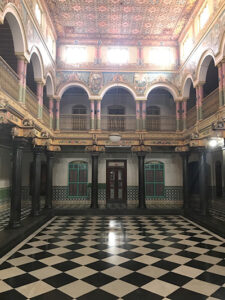 Meals are traditionally eaten on a banana leaf. At important occasions, the banana leaves would be the largest size possible. It is a sign of hospitality and respect bestowed on guests – bigger the leaf, the more items they can fit in. Weddings / life events which are celebrated over a few days would be managed masterfully by the Aachis (Chettiar ladies) who will ensure incredible detail in food/ menu planning, décor etc. They would almost never repeat a dish during the set of festivities. It is a great time to experience the expansiveness of this gastronomy and culture. Only the celebration lunch (be it for weddings or other life-events) would be vegetarian and a typical spread of dishes would be served.
Meals are traditionally eaten on a banana leaf. At important occasions, the banana leaves would be the largest size possible. It is a sign of hospitality and respect bestowed on guests – bigger the leaf, the more items they can fit in. Weddings / life events which are celebrated over a few days would be managed masterfully by the Aachis (Chettiar ladies) who will ensure incredible detail in food/ menu planning, décor etc. They would almost never repeat a dish during the set of festivities. It is a great time to experience the expansiveness of this gastronomy and culture. Only the celebration lunch (be it for weddings or other life-events) would be vegetarian and a typical spread of dishes would be served.
The variety in this cuisine is quite incredible – my advice to a first-timer in the region, is to try as many different things as possible. A Chettinad chicken or lamb curry, crab masala, prawns in black pepper, uppukari(a unique lamb preparation), sundakkaivathalkozhambu (curry made with sun-dried berries, whole shallots and garlic), idimee (String hoppers scrambled with vegetables, almost like a meegoreng), kulipaniyaram (a savoury snack) to name just a few.
In most Indian micro cuisines, non-vegetarian dishes are largely limited to chicken, muttonand seafood. The array of meats that Chettiars consume is expansive and unique – they eat a lot of game such as partridge, pigeon, rabbit, pheasant and quail; apart from the usual fare. For the adventurous, try the goat’sblood poriyal, whichresembles a beetroot stir-fry.
Ingredients used frequently in the cuisine include Indian shallots, fennel seeds, poppy seeds, coconut (in various forms), black peppercorns, dried red chilli, coriander seeds, tamarind and garlic among others. Among the more niche, lesser known ingredient isKalpasi(DagadPhool in Hindi); a type of lichen.Although it doesn’t have much of a perceptible aroma when raw, when lightly toasted along with other spices, it adds a delicious, distinctive earthy-aromatic flavour.
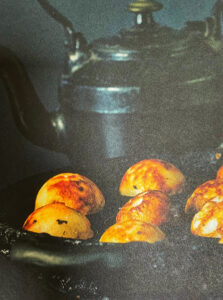 The blend of flavours and textures makes it robust and heady, aromatic and exotic. The spices are so well balanced that while it is complex and spicy, it is not necessarily chilli-hot. As with most regional Indian cuisines, all perceptible flavour senses are tested.
The blend of flavours and textures makes it robust and heady, aromatic and exotic. The spices are so well balanced that while it is complex and spicy, it is not necessarily chilli-hot. As with most regional Indian cuisines, all perceptible flavour senses are tested.
I was so humbled and inspired to learn about several of their efforts to live off the land. In mostly hot and arid conditions, they work with very little and try to be imaginative in methods of preservation such as sun-drying, pickling, etc to make the available produce more exciting. They sun-dry fruit and vegetables, rice or lentil crisps and more, pickling of garlic, onions, chillies, gooseberries, fish, prawns and more.Living in London, where almost any exotic ingredient is a click away, makes me appreciate their enterprise and creativity.
Chettinad cuisine has a fresh spice blend unique to almost every dish. It adds to the time of cooking but roasting/ frying the spices and grinding them manually in large grinding stones elevates the dish from good to great.
The Chettiarsearly exposure to new cultures and ideas, makes them naturally more creative with food and offer a continually evolving cuisine. Chettinad food has provided several entrepreneurs with the inspiration to start restaurants. Chettinad restaurants mushroomed all over Tamil Nadu, making people aware of this cuisine. The unfortunate part of this story is that most of these restaurants lack consistency and standards. Sadly, this cuisine is mis-represented in the mass-market dining options offered in India as most restaurants generally offer a poor interpretation of this cuisine. I hope that changes soon and that this cuisine gets the recognition it richly deserves.
There is an old adage in the region, ‘you have to be lucky to eat like a Chettiar.’ Needless to say, I always leave Chettinad feeling very, very lucky.
(Photographs courtesy: The Bangla table)

